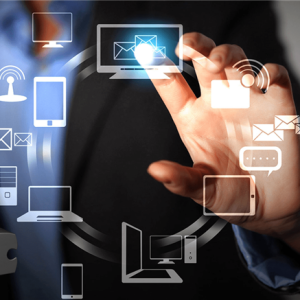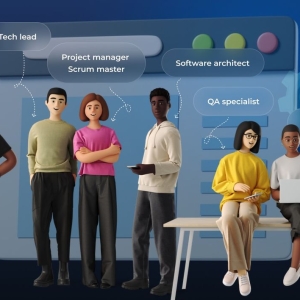In the ever-evolving landscape of healthcare, technology continues to play a pivotal role in enhancing patient care, optimizing processes, and improving overall efficiency. One of the game-changers in this arena is the integration of the Internet of Things (IoT) with healthcare software development. This synergy holds the promise of transforming the way healthcare is delivered, but it also brings along its fair share of challenges. In this blog post, we will explore the intersection of healthcare software development and IoT, delving into the challenges faced and the strategies employed to navigate these hurdles successfully.
Understanding the Essence: Healthcare Software Development and IoT
Before diving into the challenges, let's take a moment to understand the symbiotic relationship between healthcare software development and the Internet of Things. Healthcare software development refers to the creation of applications, systems, and platforms tailored to meet the unique needs of the healthcare industry. These solutions aim to streamline workflows, enhance data management, and ultimately contribute to better patient outcomes.
On the other hand, the Internet of Things involves connecting devices and systems to the internet, enabling them to communicate and share data seamlessly. In the context of healthcare, IoT devices can include wearable gadgets, smart sensors, and monitoring devices that collect and transmit valuable health-related information in real-time.
The Marriage of Healthcare Software and IoT: A Boon with Challenges
- Data Security and Privacy Concerns
In the realm of healthcare, where sensitive patient information is at stake, data security and privacy concerns top the list of challenges. The integration of IoT devices increases the surface area for potential cyber threats. Healthcare software developers must implement robust security measures to safeguard patient data from unauthorized access, ensuring compliance with stringent privacy regulations such as HIPAA.
Solution: Employing encryption protocols, implementing multi-factor authentication, and regularly updating security protocols are essential steps to fortify the defense against potential breaches. - Interoperability Issues
The healthcare ecosystem is vast, comprising various stakeholders such as hospitals, clinics, laboratories, and pharmacies. Achieving seamless interoperability among different IoT devices and healthcare software systems is a significant hurdle. The lack of standardized communication protocols can hinder the exchange of information, leading to data silos and inefficiencies.
Solution: Embracing industry-wide standards like HL7 and FHIR can facilitate interoperability, allowing different systems and devices to communicate effectively. Additionally, investing in middleware solutions can bridge the gap between disparate systems. - Scalability Challenges
As healthcare facilities expand and the volume of data generated by IoT devices increases, scalability becomes a critical concern. Developing software that can scale seamlessly to accommodate growing datasets and a higher number of connected devices is a complex task.
Solution: Adopting cloud-based solutions provides the flexibility needed for scalable healthcare software. Cloud platforms offer resources on-demand, allowing healthcare systems to expand or contract based on their requirements. - Power Consumption and Battery Life
Many IoT devices used in healthcare, such as wearables and remote monitoring devices, rely on batteries for power. Prolonged battery life is crucial to ensure continuous monitoring without interruptions. Balancing the need for real-time data collection with power consumption poses a unique challenge.
Solution: Optimizing the software to minimize energy consumption, utilizing low-power communication protocols, and exploring alternative power sources such as energy harvesting can address this challenge effectively. - Regulatory Compliance
The healthcare industry is subject to stringent regulations and compliance standards. IoT devices must adhere to these regulations to ensure the safety and efficacy of healthcare solutions. Navigating the complex web of regulatory requirements and obtaining necessary certifications can be time-consuming and resource-intensive.
Solution: Collaboration with regulatory experts, staying informed about the evolving compliance landscape, and integrating compliance considerations into the development process are essential strategies for addressing regulatory challenges.
Conclusion
In conclusion, the marriage of healthcare software development and IoT holds immense potential to revolutionize the healthcare industry. However, navigating the challenges that come with this integration requires a strategic and thoughtful approach. By addressing issues such as data security, interoperability, scalability, power consumption, and regulatory compliance, healthcare software developers can unlock the full benefits of IoT in healthcare. As technology continues to advance, the synergy between healthcare software and IoT will play a pivotal role in shaping the future of healthcare delivery, offering improved patient outcomes and enhanced operational efficiency.






